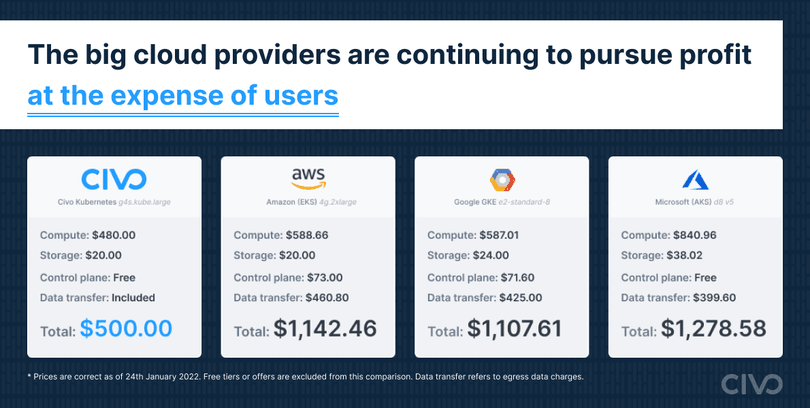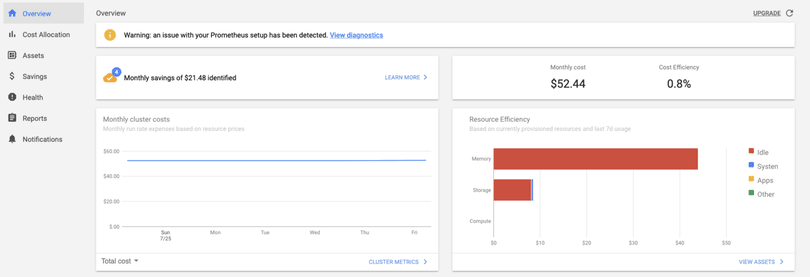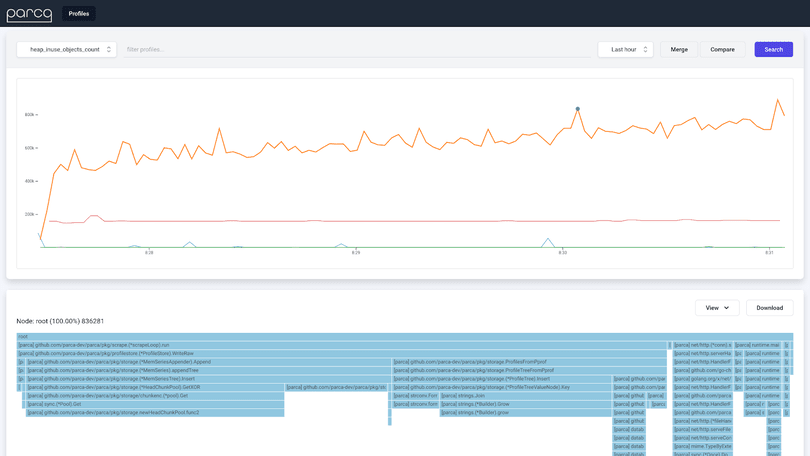With 34% of cloud developers facing difficulties when calculating how much their cloud provider is going to charge them each month, it is essential to prioritize cloud cost management. This concept surrounds the process of monitoring, controlling, and optimizing an organization’s cloud service spend. By having the correct cloud cost management strategies in place, organizations are able to eliminate unnecessary expenses through optimizing resource allocation and cost-saving strategies.
In this blog, we’ll explore cloud cost management by beginning to understand the main strategies and tools that can help you reduce your spend.
Challenges of cloud cost management
1. Poor cloud application architecture design
When developing a cloud application, developers and architects should focus on the architecture of the application. This is because specific design choices can impact the cost of running the application in the cloud. For example, adding unnecessary queries or widgets to a web application can increase cost. Poorly designed architecture can also impact an organization’s ability to manage its overall cloud costs, making it important to have the necessary skills and expertise to design efficient, cost-effective cloud architectures.
2. Complexity in billings
Most cloud service providers provide bills and invoices that vary continuously and as a result, it is difficult to understand. Organizations can save a lot of money if they can track their expenses efficiently and cut down unnecessary costs.
3. Lack of monitoring and observability
One of the biggest challenges in cloud cost management is the lack of monitoring and observability practices. Effective monitoring can help you manage your cluster more efficiently by scaling instances according to business needs. This can help reduce costs by scaling down unnecessary instances when they’re not needed. Better observability can also help you identify hidden costs and take steps to manage them more effectively.
Cloud cost management strategies
When trying to control your cloud cost spend, it is important that you have the relevant strategies in place. Doing this will allow you to identify where you are overspending, reduce these costs, and create a budget aligned with your business goals.
Monitoring cloud usage and cost
To effectively monitor your cloud usage and costs, you should utilize cloud cost management tools offered by your cloud provider. Whilst regularly monitoring your cloud usage and costs will allow you to maximize resource allocation and lower costs, it also has the other benefits of:
-
Improved strategy: When your business is able to understand how resources are being utilized, it will provide you with a way to make informed decisions. This ultimately will allow your business to prioritize the optimization of both cost and performance.
-
Improved scalability: Without regularly monitoring your cloud usage and costs, resource capacity will be unknown. By monitoring this, you will be able to scale resources up or down based on their requirements.
-
Improved security: Understanding how resources are being used will also allow your business to identify potential threats. Monitoring your cloud usage will prevent security threats from occurring and will instead result in heightened financial and reputational security.
In the following section, “cloud cost management tools”, we will go into further detail on how tools such as Kubecost can help support you in managing your cloud costs.
Optimizing cloud resources
Carefully optimizing your cloud resources will allow you to improve overall performance, efficiently allocate your resources, and reduce costs. This can be achieved by carefully monitoring and managing your cloud resources, as well as optimizing the use of your storage. Two key platforms that can be used to help with this include Grafana and Finout:
- Grafana: With Grafana, users are able to observe everything through curated data that is designed to help unify your data and enhance collaboration throughout teams. By creating a transparent environment for your business, you are able to improve the efficiency of your operations and create quick changes that meet the needs of your organization.
We spoke with Eamon Ryan, Principal Field Engineer at Grafana about monitoring and observability trends in our Civo TV video here
- Finout: Designed as a cost management solution for your cloud, Finout helps users to monitor, manage, and reduce their cloud costs by gaining complete control cost observability. By utilizing this platform, users can expect to optimize their cloud resources by diving deeper into their cloud spend and allocating resources accordingly.
Learn more about cost monitoring in the Cloud Native space in our Civo TV video where Kunal Kushwaha spoke with Roi Rav-Hon, Co-Founder & CEO at Finout.
Compare costs across various cloud providers
In our research, we found that 82% of cloud developers believe that the big three hyperscalers should reduce their costs. This has paved the way for a new breed of cloud providers such as Civo to create an upfront and predictable pricing model that is built by developers for developers.
Whilst comparing costs for various cloud providers allows you to find the most cost-effective solution, it also helps businesses to make informed decisions that can lead to the reduction of overspending. To see how much you can save with Civo Kubernetes, visit our pricing page for more information.

Source: The Cost of Cloud report 2022
Regularly reviewing your strategy
With 74% of businesses seeing an increase in their cloud usage, and therefore their costs, it is essential to regularly review your strategy to align with any changes in business requirements. To review your cloud cost strategy, you should consider some of the approaches outlined below:
-
Establish policies and processes for managing cloud costs: This can include setting budgets, allocating targets, and providing support/training to your team.
-
Providing tools and software for visibility: To better manage your cloud application's storage, instances, and other resources, you can set up various monitoring and observation tools. These tools can provide visibility into your cloud usage and costs, helping you optimize your resources and avoid overspending.
-
Establishing practices and frameworks across teams: Practices and frameworks like DevOps and GitOps, can help an organization manage cloud costs as there will be teams to supervise cloud operations.

Source: The Cost of Cloud report 2022
Cloud cost management tools
Kubecost
Kubecost is an open source cost management platform designed for teams using Kubernetes. It helps users optimize their spending on cloud resources by helping developers with systems to track overruns and show the savings of proper capacity management.

Source: Kubecost blog
Discover more about using Kubecost in our tutorial with Saiyam Pathak, Director of Technical Evangelism at Civo.
Parca
The Parca agent is designed to systematically profile CPU, memory, I/O, and other resources. It has optimized, built-in storage to support continuous profiling, helping organizations save on unnecessary resources.

Source: Official Parca Github
Harness
Harness’ cloud cost management (CCM) tool helps users monitor cloud costs of several cloud service providers and Kubernetes clusters. For Kubernetes clusters, it can track the namespaces, nodes, workloads, labels, and other aspects. Using a CCM tool like Harness allows you to optimize your instances and cluster resources by means of intelligent cloud AutoStopping rules.

Source: Official Harness documentation
Datadog
The Datadog cloud cost management tool offers visibility into all cloud resources running from a single observability platform. It directs irregular cloud spendings by showing changes in costs And allows users to visualize cost data alongside other metrics and logs to fix cost inefficiencies.

Source: Official Datadog blog
We cover more to do with Datadog in our "Kubernetes Dashboard" blog, including how you can install the Datadog Dashboard yourself.
How Civo can help manage your cloud costs
Managing your cloud costs can be simplified by utilizing cloud providers such as Civo who are dedicated to restoring transparency to the heart of cloud computing. Users are provided with a streamlined experience that cuts through the complexity and delivers reliable, super-fast cluster launch times - all for a fair price.